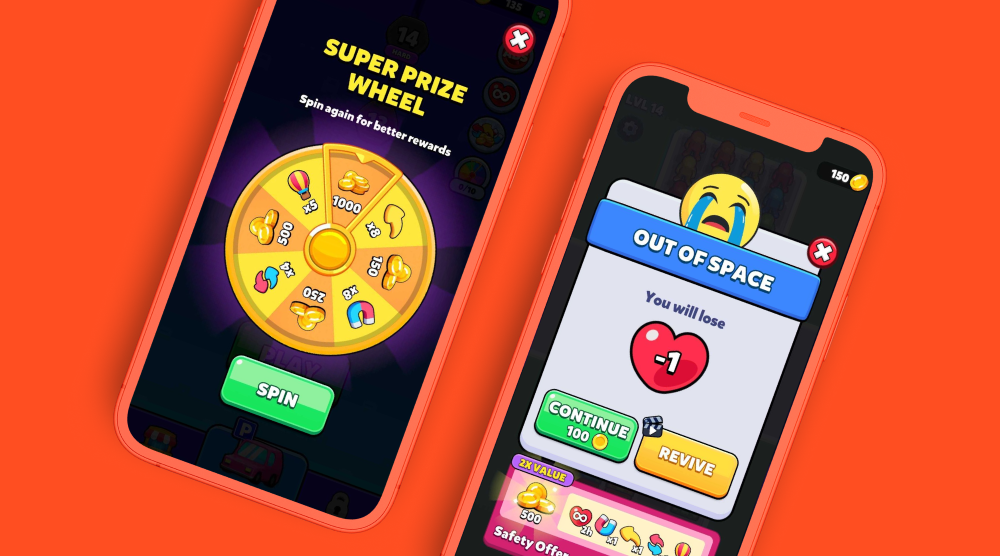Runners go back a long way - the genre is practically prehistoric in mobile gaming terms. Some of the earliest examples of casual games that grabbed the attention of players and the imaginations of developers were runners, like the seminal Jetpack Joyride, ubiquitous Temple Run, and timeless Subway Surfers. Yet, despite its age, the subgenre remains one of the most played, finding its new home at the top of hyper-casual charts.
Today, the most successful runners are gate runners, making the subgenre a great starting point for your next hyper-casual game. Here we dive into the level design of the subgenre, what it is, how its difficulty curves are balanced, ideation tips, and common mistakes to avoid in development.
WTF is a gate runner
Just like in puzzle and simulation games, most level design can be understood using three things: the frame (in which the game is played in), the objects (the in-game assets that users can interact with, including being obstructed), and the conditions (the rules of the game).
At the most basic level, runners are games where a player character moves down a predetermined linear runway. This is the frame of the subgenre. Generally, the character can only move forward, with the forward motion being applied automatically. Player input is only in which horizontal direction the character is moved - left or right. These are the conditions. The challenge that the player must overcome is introduced via obstacles to be avoided as they progress on the runway. And these are the objects. Altogether, these components make up the core gameplay loop of runners.
Gate runners take this core loop and add the object of gates that players can run through. These gates can either supply resources, apply changes to the character, remove resources, or result in a fail state. Players need to run through good gates to accomplish an end-level goal while avoiding the bad gates that would prevent them from accomplishing this goal. Goals can include defeating a boss enemy, collecting enough resources to meet a requirement (like keys to unlock a door), or reaching the specifications of a level (changing the character to look a certain way). Almost all gate runners follow this simple formula.
Ideation tips for gate runners
Fundamentally, gate runners all share the same basic mechanics and loop - so variety and uniqueness won’t come from gameplay, but the theme and style of the game. So your theme is pretty important since it’s got a lot of lifting to do.
Finding your theme is going to be the biggest challenge of your ideation process for gate runners, but that doesn’t mean there aren’t useful tips and tricks to finding one. Here are a few to get you started:
1. Top charts!
It probably sounds obvious by now, but looking at the top charts is still one of the best ways to find ideas that work, and that applies to your theme too. Don’t just look at the runner or hyper-casual charts, but try and look to adjacent genres. Some examples of adjacent genres that have seen good crossovers with runners are shooters and beauty games. Remember, the more unique your theme, the better the reward-to-risk ratio.
2. Social media
Another great place to look is social media. By checking in with what’s trending in the online conversation, you can see what’s engaging people and getting them talking and sharing. Check out the top searched keywords and hashtags for inspiration on platforms like TikTok and Instagram. A useful hack for getting around your own personal algorithm is to create a new account that you use just to get inspired.
3. Media
Take a look at major media publications to see what’s happening in the mainstream. Visit sites like Pocketgamer.biz to see top headlines in the world of mobile games, but don’t just stick to mobile. Big console and PC releases have their own hype train that you can hop on to. When a huge title like GTA VI drops there’ll be plenty of mobile players looking to scratch the FOMO itch and yours could be the game that does it. The same applies to movies, a major release like Deadpool & Wolverine will have a similar effect.
The difficulty with gate runners
Difficulty in gate runners is a little different than in other games. In gate runners, the challenge you pose to players should always be linear while rewards should be exponential. The reasoning goes that players should always feel like their decisions are impactful and significant and that they are actively getting stronger.
Traditional runners used to scale their difficulty until the game became functionally impossible to play. This had its pros and cons, the pros being that the game felt more competitive, while the cons being that there was no natural endpoint for the user. So, players would play until they couldn’t anymore and then churn.
These days, time commitment is what it's all about. So, the rewards should outscale the challenge at all times - your game should start super easy, then steadily increase in difficulty while rewards grow exponentially. This increase in difficulty isn’t to test the player's skill, but rather to test player retention. When the game becomes too difficult, this creates churn. Churn lets you know where you should add new elements to ease the difficulty.
There are a few ways to increase or decrease difficulty in runners, the most simple being speeding up or slowing down the game.
Avoiding the most common mistakes in gate runners
The two most common mistakes that devs make when creating gate runners are around complexity, either by having too much too soon or having not enough. The complexity here refers to the mechanics of the game, like gates, obstacles, and mini-games for example.
If there’s not enough complexity in your game then you run the risk of making a boring and repetitive experience - which means users won’t stick around for very long. On the flip side, if you implement too many mechanics too early you overwhelm players and the game becomes too complex. Which means they won’t stick around at all. Getting it right is all about balancing player exposure to new mechanics and content with the repetitiveness of the game. Luckily for you, there’s a trick to striking the right balance: playing your game and sharing it.
By spending time in your game you can get a sense of the sameness of your gameplay and feel out if you’re adding too many elements at once. When testing your game, keep in mind the early player experience, the clarity of the game’s goal, and the mechanics you need to use to reach the next stage.
But don’t just take your word for it, share the game with your friends and family to get their input too. The more opinions you collect, the better your sample will be at predicting how users in the wild will react.
Let’s get started
These tips are a great starting point for your next runner game. Use them, and you’ll skip a ton of the mistakes and time sinks many devs have when creating their runner games. We can’t wait to see what you come up with.
Let's put these tips to good use
Publish your game with Supersonic



